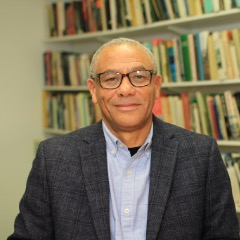You are not currently logged in. Please create an account or log in to view the full course.
How was the Group Areas Act implemented from 1950?
- About
- Transcript
- Cite
South Africa – Apartheid in the 1950s
In this course, Dr Wayne Dooling (SOAS, University of London) explores the establishment and maintenance of the apartheid regime during the 1950s. In the first lecture, we think about the implementation of the Group Areas Act of 1950. In the second lecture, we think about the implementation of the Bantu Education Act of 1953. In the third lecture, we think about how African culture developed in townships during the 1950s. Next, we think about how the period of segregation prior to 1948 differed from apartheid. In the fifth and final lecture, we think about how apartheid was experienced in everyday life during the 1950s.
How was the Group Areas Act implemented from 1950?
In this lecture, we think about the Group Areas Act of 1950, focusing in particular on: (i) the passing of the Group Areas Act in 1950, only two years after the establishment of the apartheid state in 1948; (ii) the particular focus of the Group Areas Act being on the segregation of urban areas; (iii) the forced removal of hundreds of thousands of people from their homes as a result of the Group Areas Act; (iv) the building of many new, segregated townships as part of the need to provide mass housing to the removed racial groups from urban areas; (v) the forced removal of sixty thousand residents between 1966-70 from District 6, a newly designated Whites only area just outside of Cape Town; (vi) the Group Areas Act’s use to forcibly relocate as many as eight hundred thousand people; (vii) one key purpose of the Group Areas Act being to remove ownership of property from the Black African population; (viii) the severe housing crisis which, while existing for decades, became particularly problematic for South Africa’s Black African population during the interwar years; (ix) slum clearance being the forced removal of Black African residents from slum yards by local authorities, under the guise that this was because the properties were unsanitary and unfit for human habitation; (x) the strong correlation between forced removals and pre-marital births, as well as crime rates, especially violent crime, a link which remains to this day; (xi) forced removals from Sophiatown being particularly damaging as it was the only region of Johannesburg in which Black African people had freehold rights, and was the home of a vibrant culture of middle class African people; (xii) the lack of house construction under the National Party in the late 1940s and early 1950s, despite their recognition of the housing crisis; (xiii) ‘model townships’ as a solution to the housing crisis, which were Black African residential neighbourhoods outside of towns and cities; (xiv) Soweto being the most famous of the African townships; (xv) the design of townships being to ensure ease of government forces to either enter or close off the area in the event of protest or conflict; (xvi) the continuation of the housing crisis throughout the 1960s and 1970s, despite the building of townships; (xvii) the development of Bantustans in response to the housing crisis, which were areas of land set aside to particular ethnic categories of people in South Africa, signalling grand apartheid.
Cite this Lecture
APA style
Dooling, W. (2024, April 11). South Africa – Apartheid in the 1950s - How was the Group Areas Act implemented from 1950? [Video]. MASSOLIT. https://massolit.io/courses/south-africa-apartheid-in-the-1950s/how-did-the-period-of-segregation-in-south-africa-differ-from-apartheid
MLA style
Dooling, W. "South Africa – Apartheid in the 1950s – How was the Group Areas Act implemented from 1950?." MASSOLIT, uploaded by MASSOLIT, 11 Apr 2024, https://massolit.io/courses/south-africa-apartheid-in-the-1950s/how-did-the-period-of-segregation-in-south-africa-differ-from-apartheid

